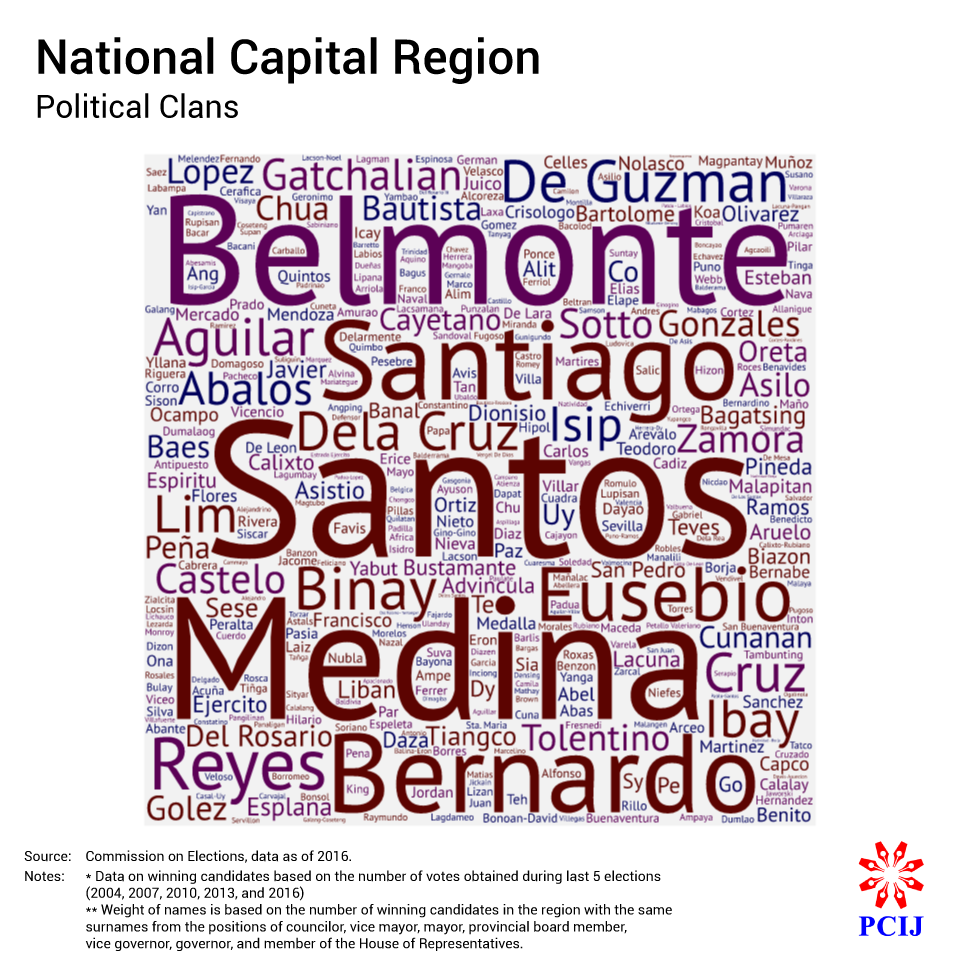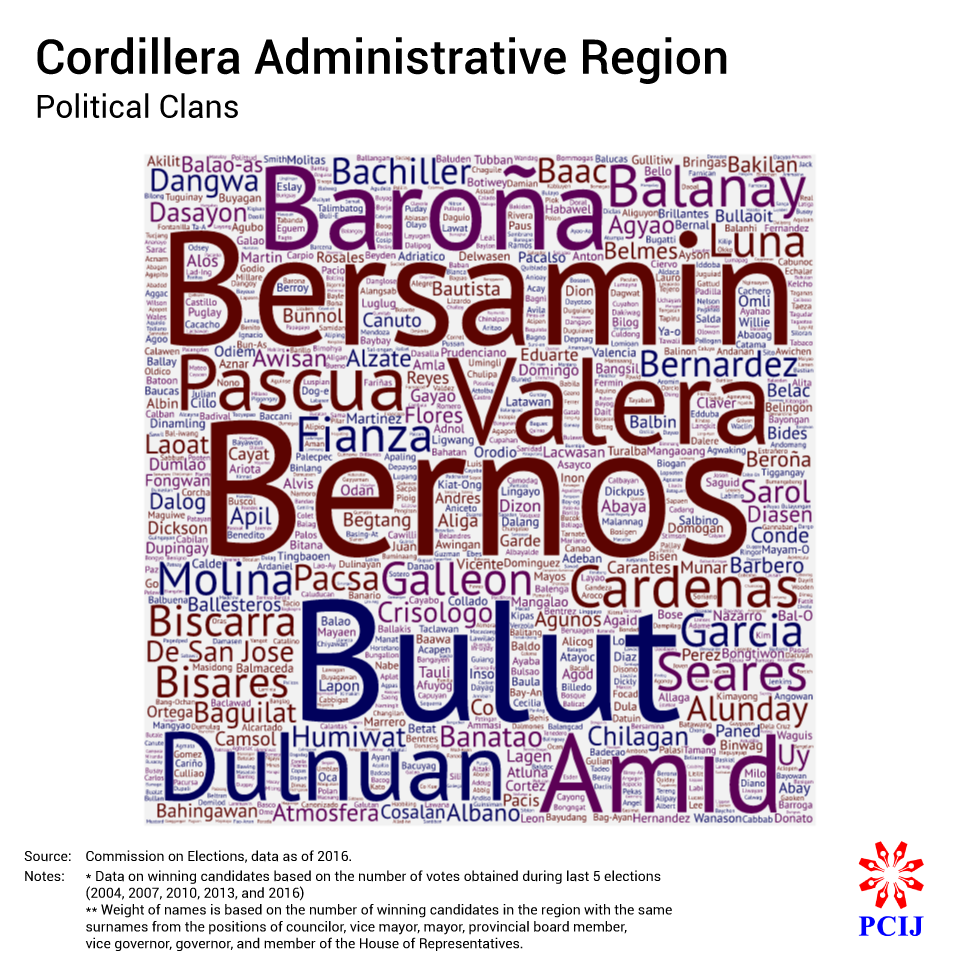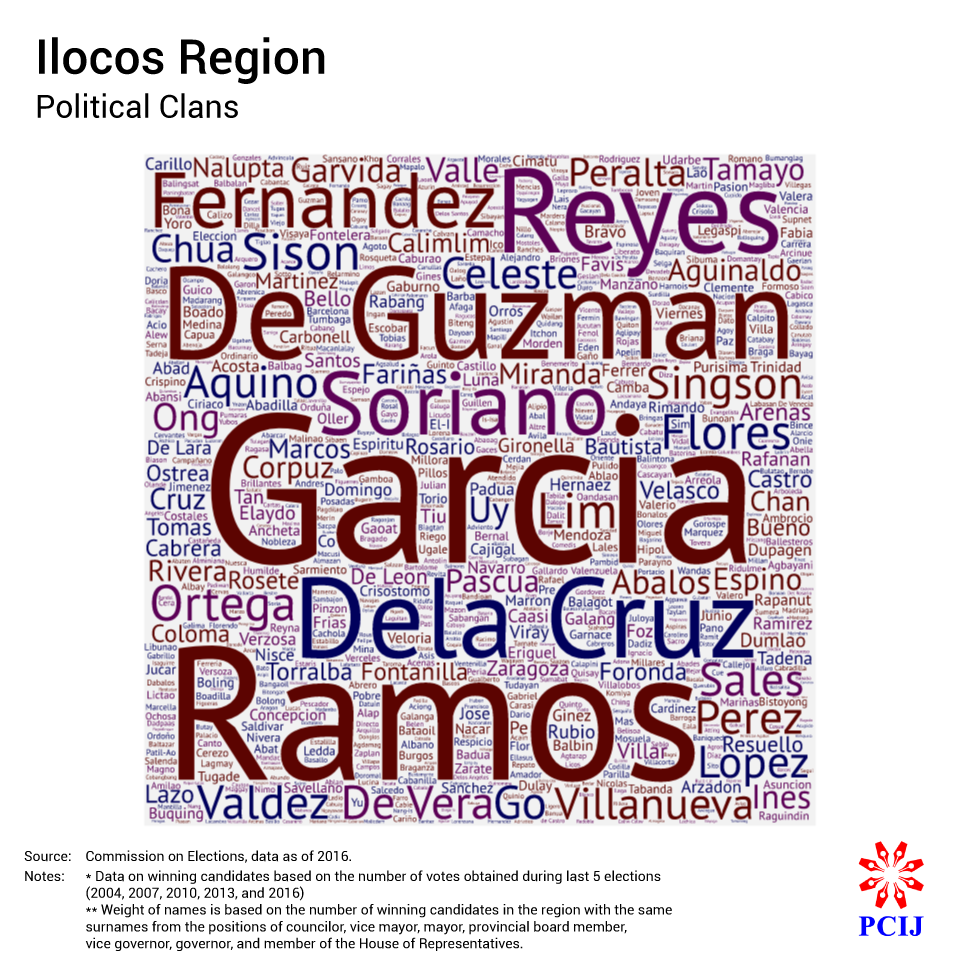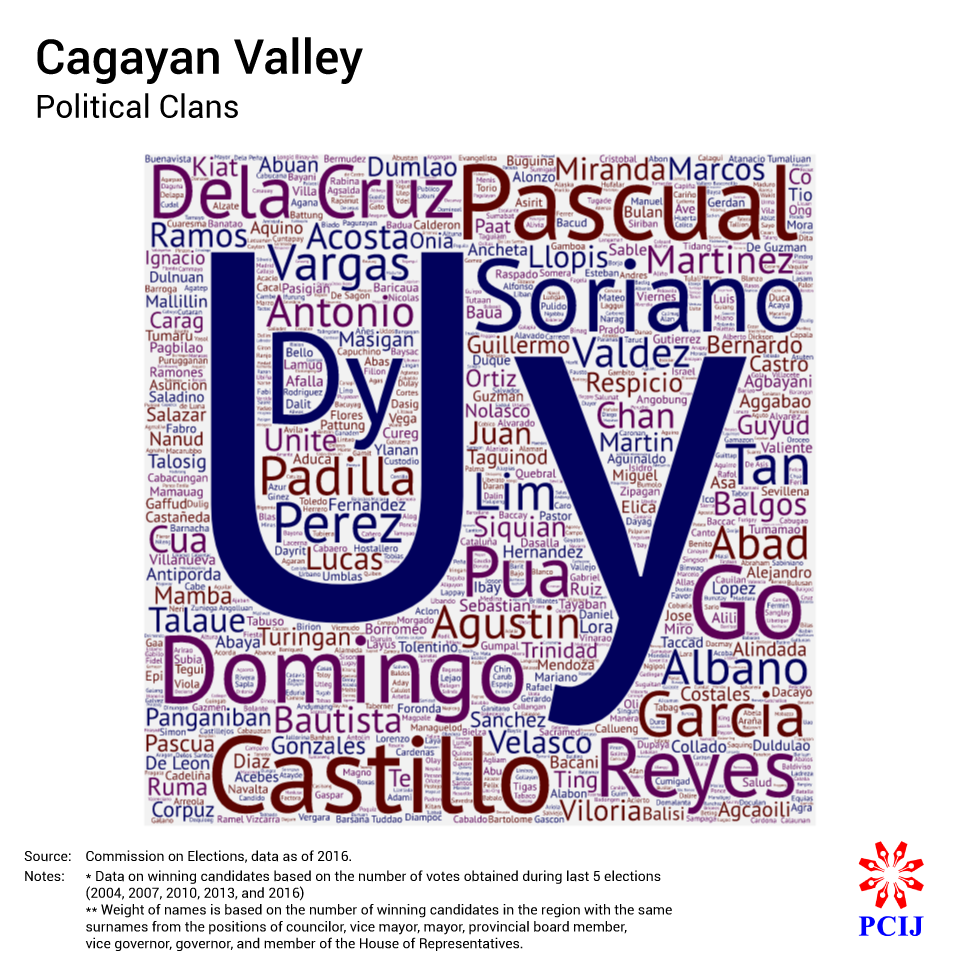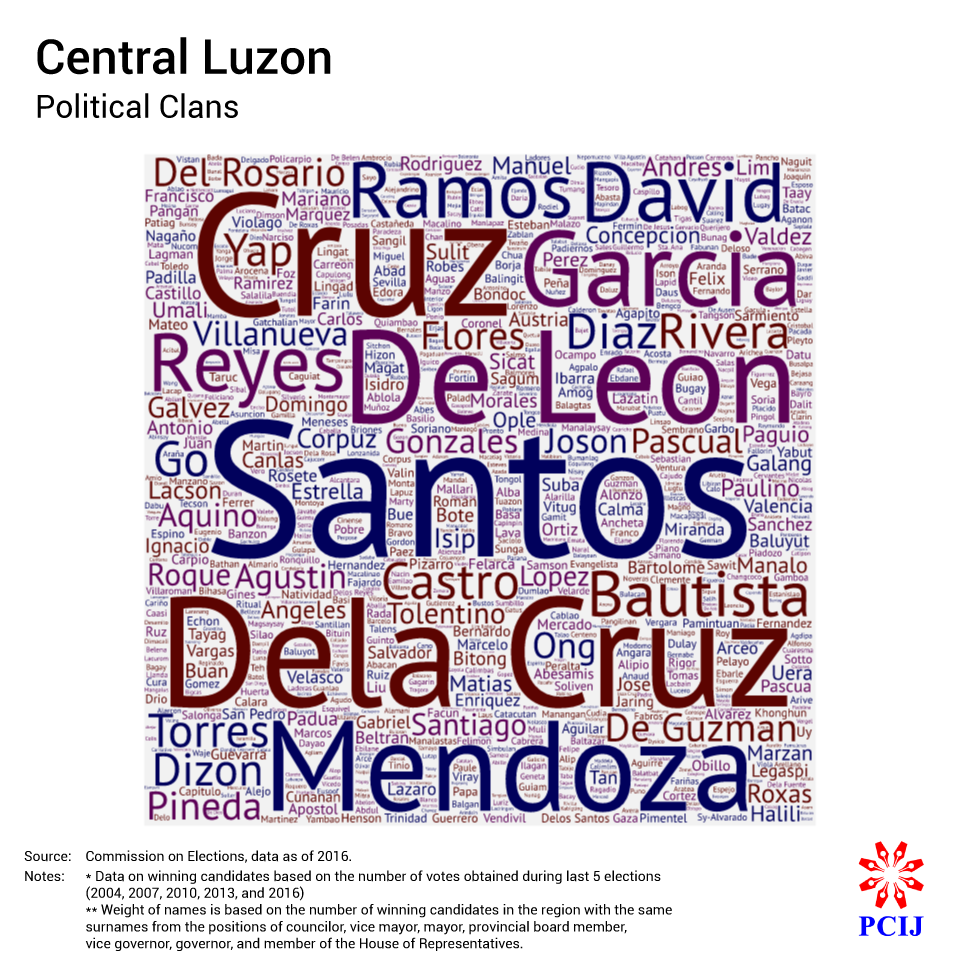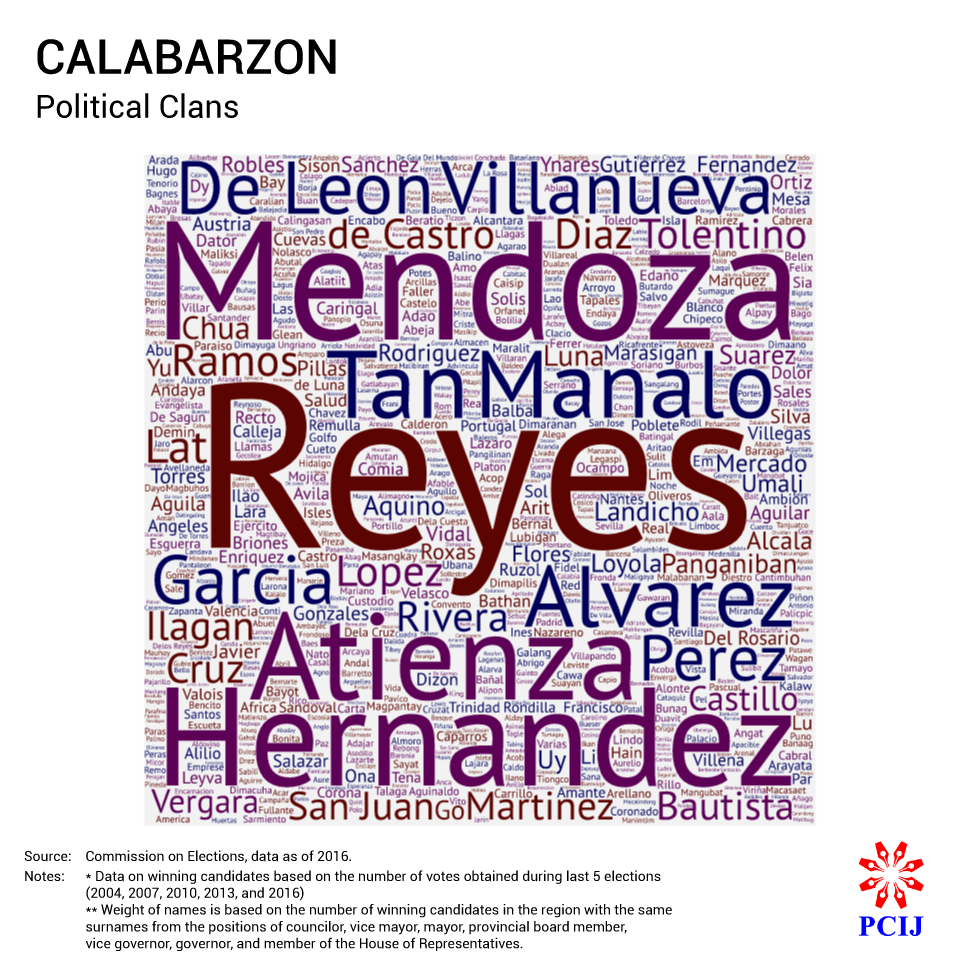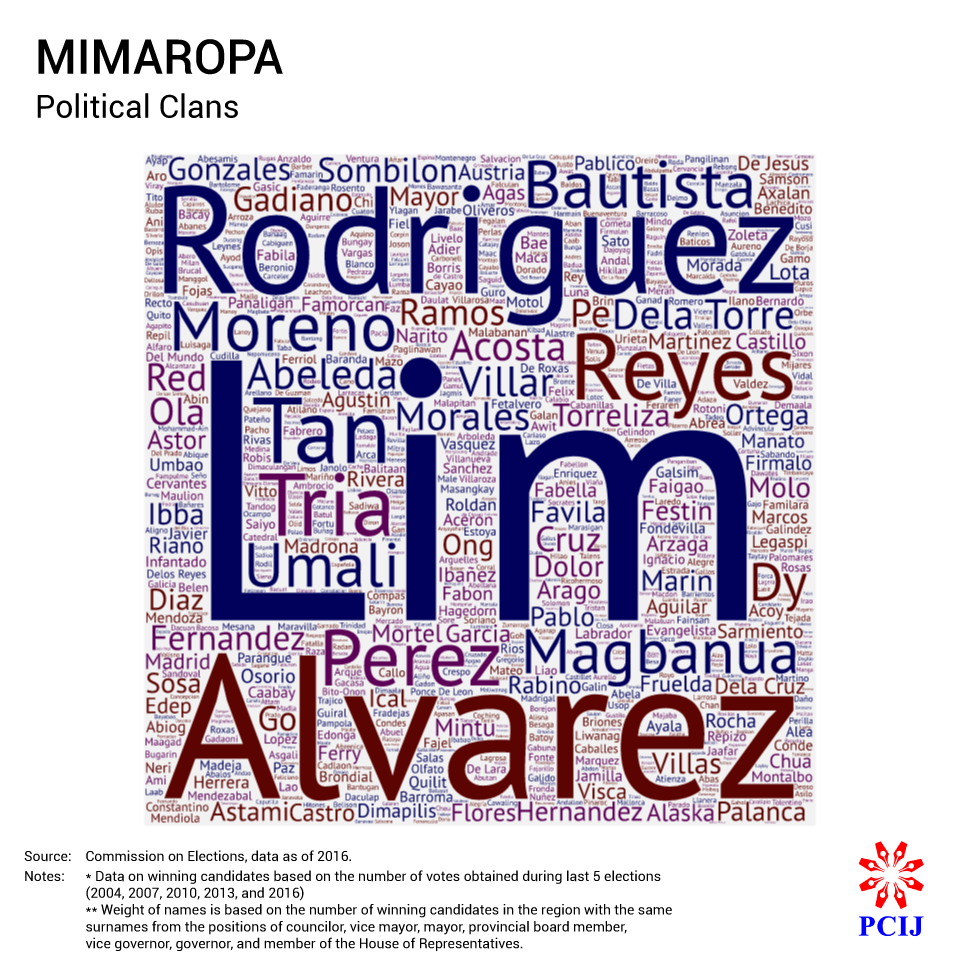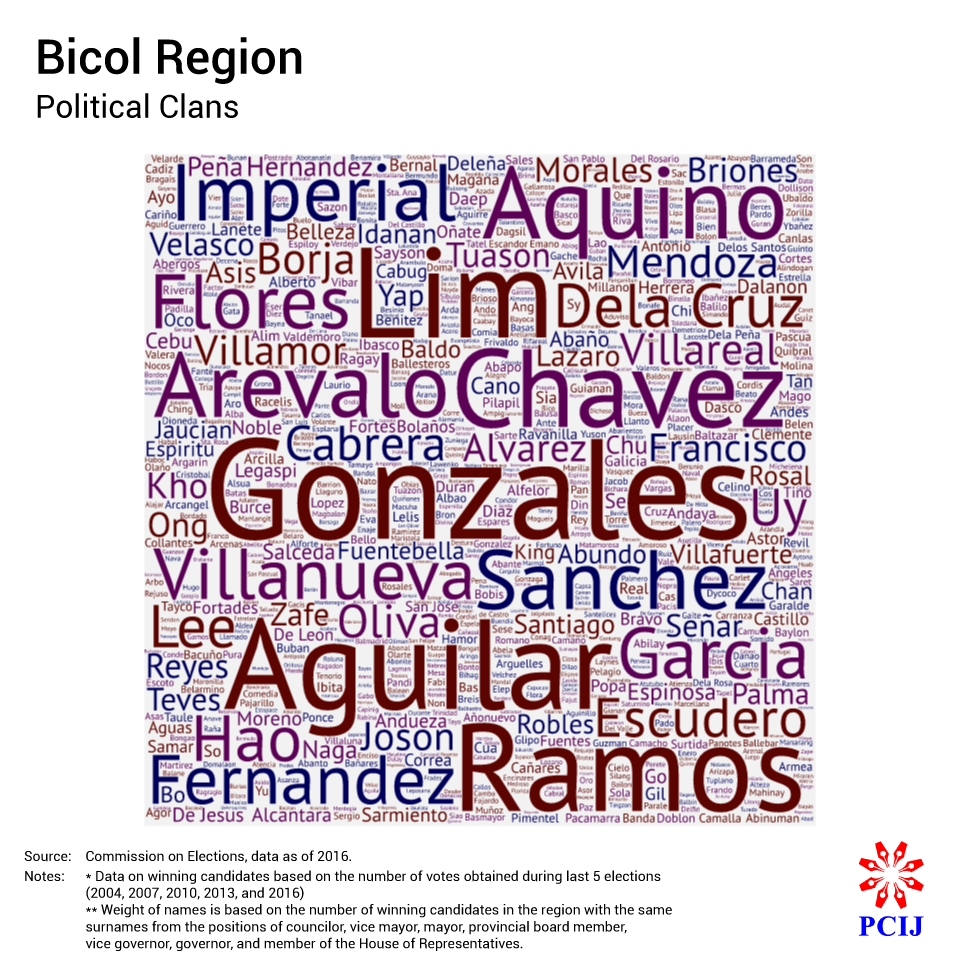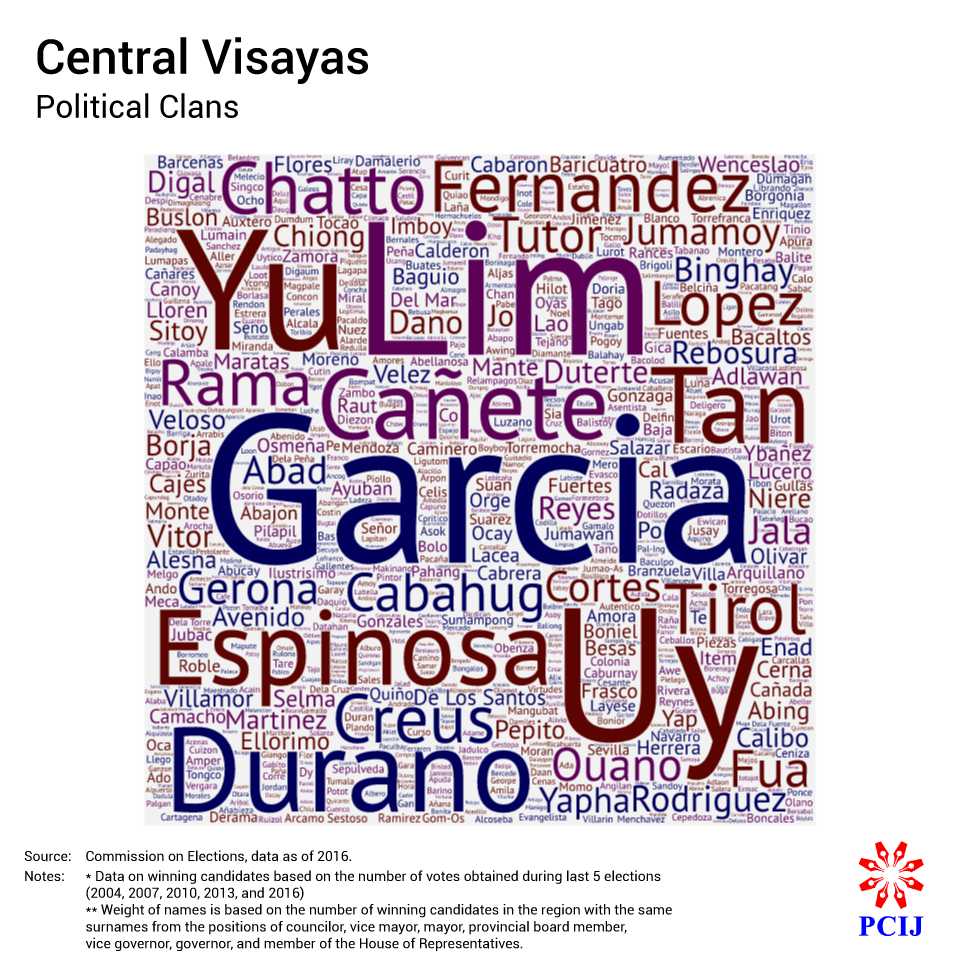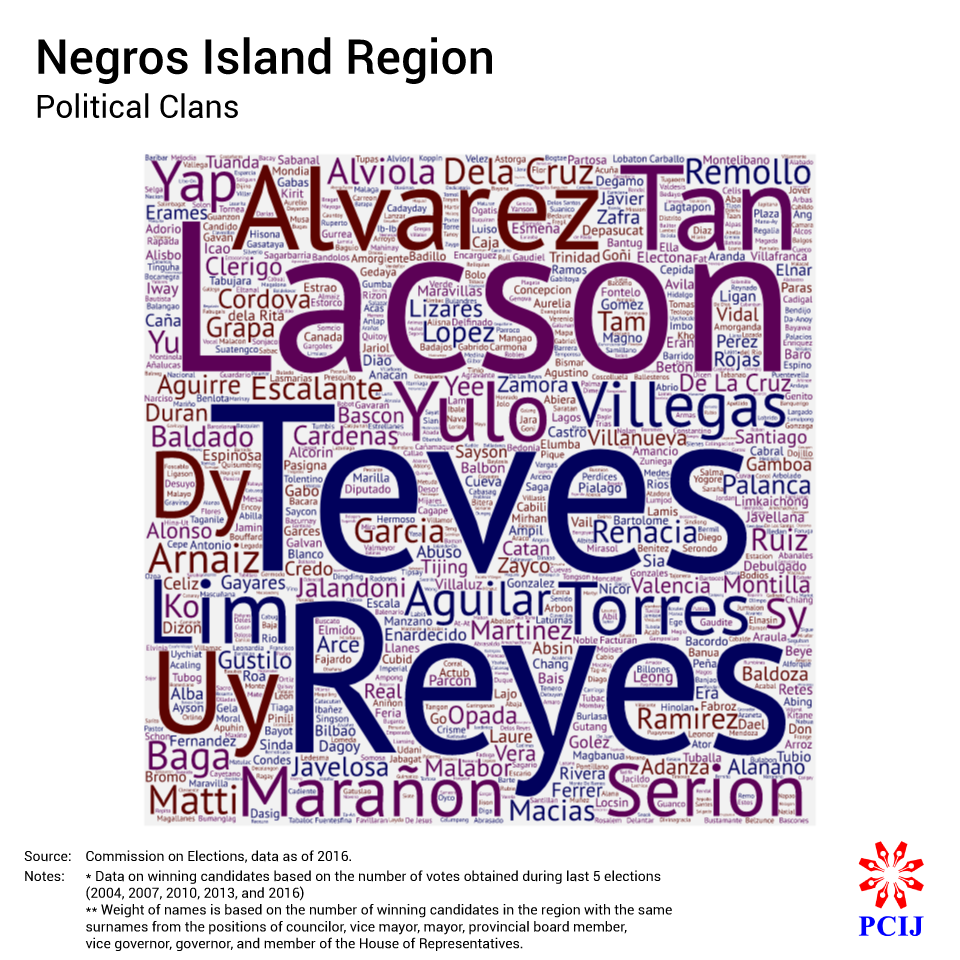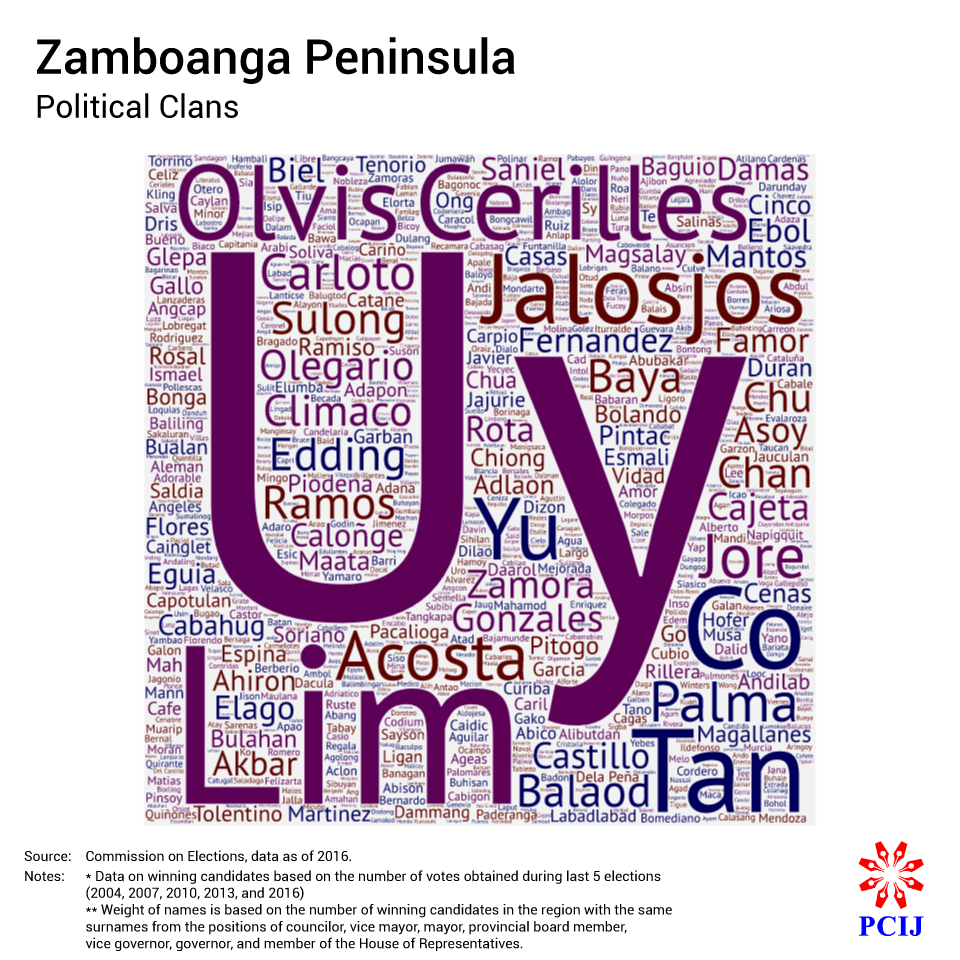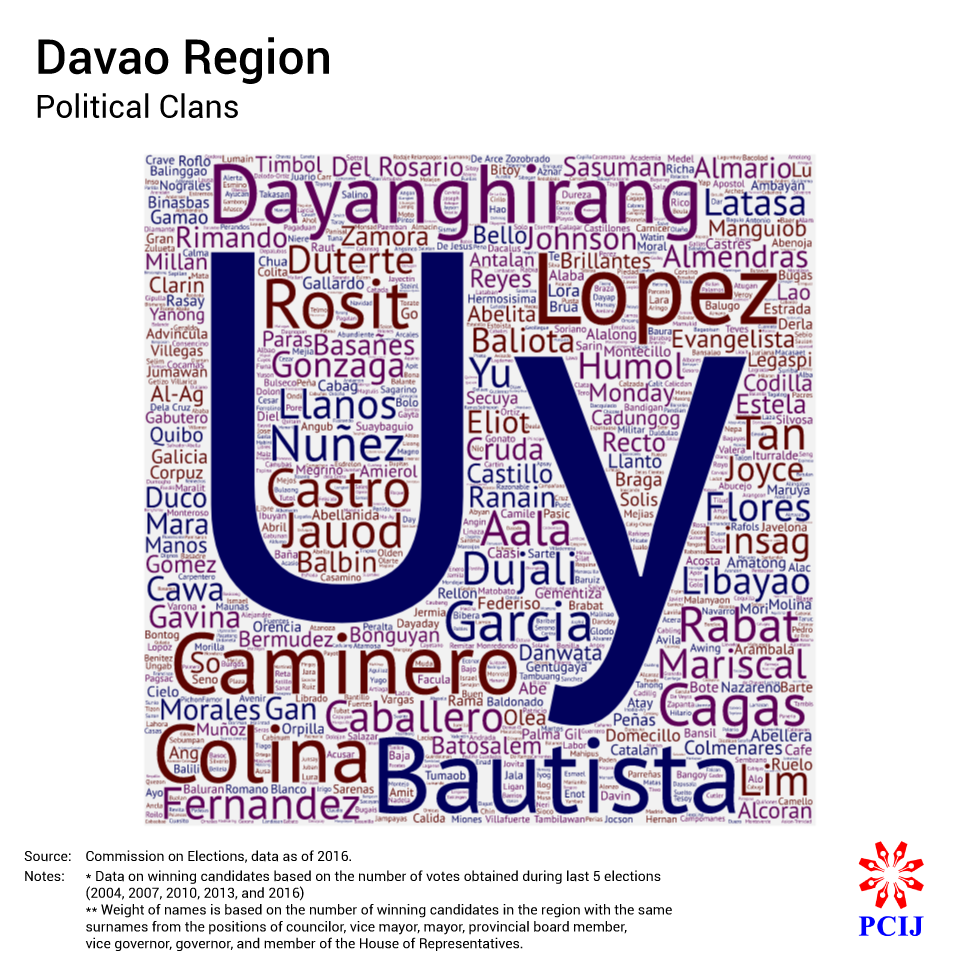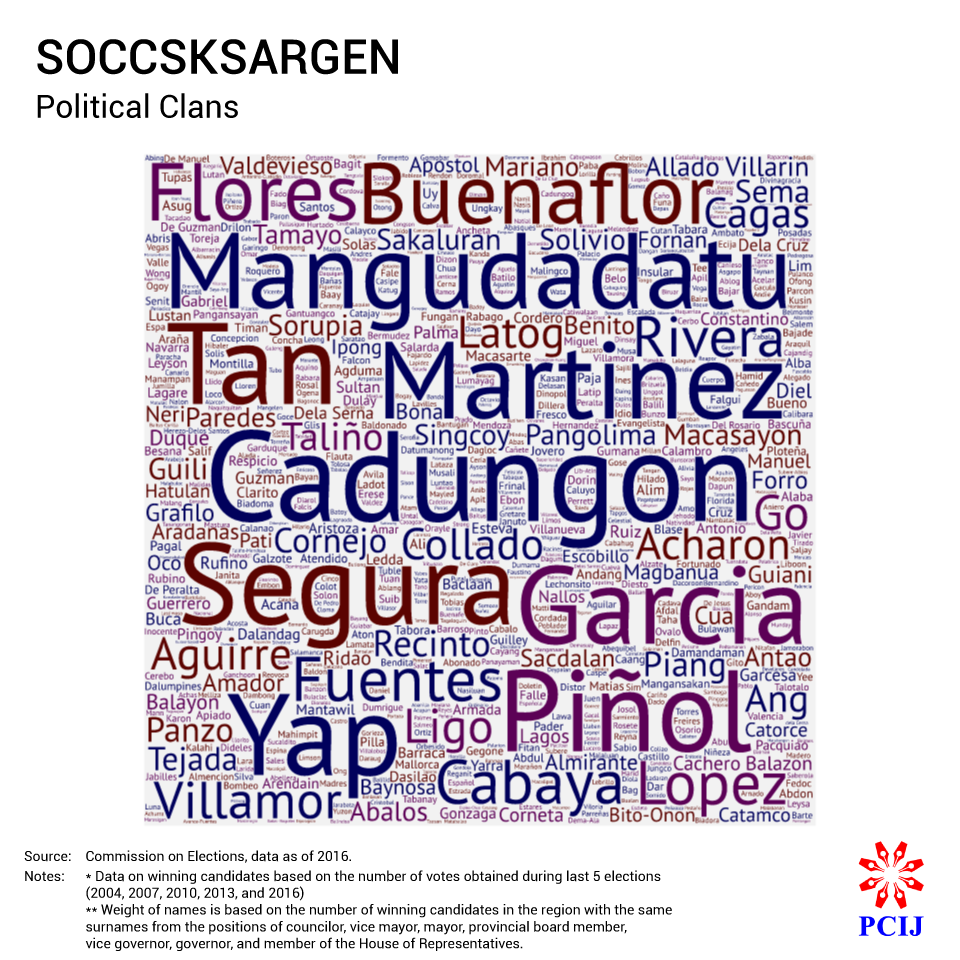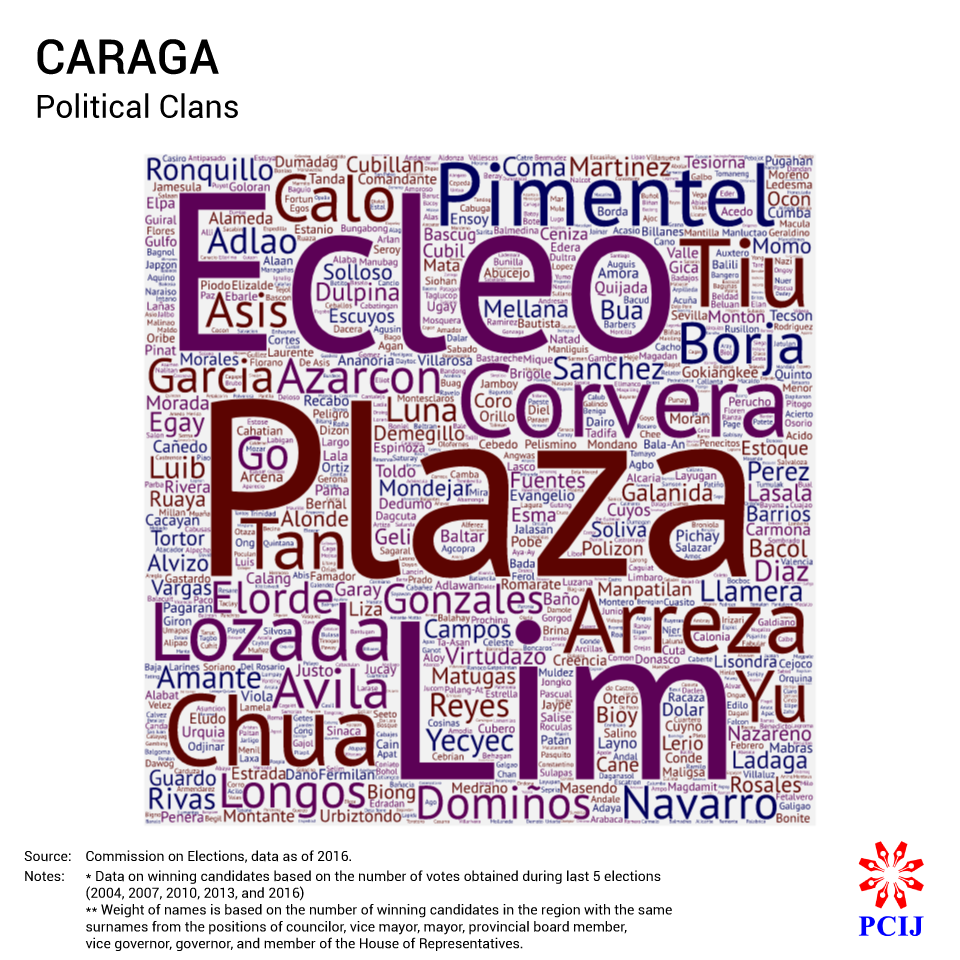A “SELF-EXECUTING” ban on political dynasties is supposedly one of the crown jewels of the draft constitution for the pitch to shift to a federal system of government. It is paired with a proposed ban on turncoatism, or candidates changing political parties between elections or during election campaigns.
These are supposed to limit the opportunities for the powerful few to continue to have considerable clout, as well as to prevent candidates from repeatedly making a mockery of the political-party system.
But there are a few big ifs. Drafted by the 22-member Consultative Committee to Review the 1987 Constitution that President Rodrigo R. Duterte organized via an executive order, the proposed Charter has yet to be reviewed and certainly amended by Congress sitting as a Constituent Assembly (ConAss). Once approved in its possibly mangled glory, the draft will have to secure the vote of the 55-million or so registered Filipino voters.
And if by some miracle the ban on political dynasties passes approval, all that it would prohibit is the succession and simultaneous holding of public office by members of the same family, up to the second degree of affinity or consanguinity (parents, children, siblings).
The catch is that the draft Charter, once approved in a plebiscite targeted for 2019, calls for the conduct of synchronized elections for all regional and federal positions in May 2022 — on a zero-sum game basis.
This means simply that old and new politicians, notably those from the about 200 political clans enduring, emerging, and lording over the nation’s 81 provinces could all run for a four-year term, and even get re-elected for another four.
And because all the same clan members could all run — and win as they most likely would — they could grab 10 more years of uninterrupted reign in their turfs during the 10-year transition period to federalism.
By the data of the Commission on Elections (Comelec) in the last five elections from 2004 to 2016, most of the same families have dominated politics in the regions, cities, towns, and barangays, and consequently cornered and controlled vast sums of public funds.
POWER IS HEIRLOOM?
Politics is family in nearly all the 81 provinces.
The patriarch or matriarch launches a dynasty after getting elected as mayor or governor, and with the spouse running in tandem for vice mayor or vice governor. A son or daughter is fielded to seats in the council or barangay, and over a series of elections groomed to succeed the father or mother. Forced to sit out after three three-year terms or nine years, the parents bequeath their posts to the children, or to siblings or in-laws or surrogates, passing on power to one of their own as if it were the clan’s heirloom.
For many clans, the path to greater power is a lateral stretch. They move to expand their turf on to another town or province, or — in situations where there are more clan members running than there are seats to pick and grab in the clans’ bailiwick — to the House of Representatives or the Senate.
For some others, the path to greater power is a vertical stretch. The patriarch rules for nine years, and while forced to sit out in the bleachers, the wife or son or daughter runs in his stead. After his brief respite from elections, the patriarch runs again, the succession process repeats, and power remains with the clan.
PCIJ had reported that throughout the 24 years of elections in the Philippines’s 20 provinces with the most number of registered voters, family names on the ballots seem to keep repeating themselves, the same ones popping up over and over again.
Based on the list of candidates from the 1992 to 2013 elections from the Commission on Elections (Comelec), about 10,000 persons had repeatedly occupied 17,673 elective posts in six of the nation’s 20 vote-rich provinces. They have held positions of power from the local level to the halls of Congress simply by belonging to political clans that have continued to hold sway over communities large and small across the country for the last quarter of a century.
Various members of these political clans that litter Comelec’s list often take the same positions again and again. Members of a clan are also usually elected all at the same time for different posts. It is also not uncommon to see members of the same family fighting against each other in an electoral race.
A few members of these families have even found their way to a political career through barangay elections, or turned to barangay positions after failed local bids. This has been a common practice, despite barangay officials supposedly being non-partisan in nature. A number of them have also managed to install their members to national positions, including the highest one that enabled their family to wield power from within the Palace along the Pasig River.
101 NAMES DOMINATE
PCIJ analyzed Comelec’s data on the list of candidates in six of the 20 vote-rich provinces from the 1992 elections. These six have a combined voters’ strength of 10.86 million or 20 percent of the latest count of total registered voters of 55.5 million.
The Comelec data showed at least 101 different family names that are each tied to at least eight electoral successes in the last eight elections, excluding the town-council seats. These family names are shared and carried by as many as 1,159 elected officials.
The top 10 most recurring family names in the Comelec’s list of candidates, or those that have more than four members who won their electoral contests and have at least 17 electoral victories over the last eight elections, include:
• Durano, Garcia, Martinez, and Yapha in Cebu in Central Visayas, which is home to five percent of the country’s voting population and has an economy trailing that of Metro Manila;
• Celeste, Espino, and Perez in Pangasinan in northern Luzon, which is the richest province in Ilocos Region;
• Alvarez, Lacson, and Maranon in Negros Occidental in the newly created Negros Island Region with the highly urbanized city of Bacolod as the center; and
• Bautista in Davao del Sur in the southeastern part of Mindanao.
THE CLANS OF THE REGIONS
In truth, what has been touted to be a redistribution strategy or a mechanism for sharing public funds and resources among the revenue-rich and revenue-poor regions of the country, the pitch to shift to federalism could, says De La Salle University political science professor Dr. Julio Teehankee, who is also a ConCom member, well have as “unintended consequences” escalated political rivalry and electoral violence among political clans.
Fellow De La Salle professor Ronald Holmes, who is also head of the pollster PulseAsia Research Inc., also worries that federalism could just “create new patrons” and even “semipatrons at the subnational level” as the clans battle it out over not just the presidency, but also the federal states’ premier posts.
Indeed, which clans with the longest and strongest hold on power in the regions would likely compete for the regional pot? For this report, PCIJ curated and analyzed Comelec reports on the candidates who won in the last five elections that were held in 2004, 2007, 2010, 2013, and 2016.
The weight of clan clout in the region was pegged on the number of candidates with the same surnames who ran for the position of councilor, vice mayor, mayor, vice governor, and member of the House of Representatives in the five election years covered.
NATIONAL CAPITAL REGION
The National Capital Region will be assigned as the federal capital of the Philippines.
For statistical purposes, the Philippine Statistics Authority grouped the 17 cities and municipality of NCR into four districts: 1st District: City of Manila; 2nd District: Mandaluyong City, Marikina City, Pasig City, Quezon City, and San Juan City; 3rd District: Caloocan City, Malabon City, Navotas City, and Valenzuela City; and 4th District: Las Pinas City, Makati City, Muntinlupa City, Paranaque City, Pasay City, Pateros, and Taguig City.
NCR has the second largest voting population among the proposed federated regions, with 6.25 million registered voters (11.5 percent of the country’s voting population) in 2016.
The Belmontes of Quezon City make up currently the largest political family in NCR, with five members who had ran and won political office.
Long-time city mayor Feliciano ‘Sonny’ Belmonte Jr. is currently serving his second term as House member for Quezon City’s fourth district, along with his nephew Jose Christopher Belmonte who is also serving his second term as House member for the city’s sixth district. Feliciano’s son, Ma. Josefa, is now on her third term as vice-mayor. Two other kin, Irene and Oliviere Belmonte, serve as members of the city’s Sanggunian.
In the other cities of NCR, however, the same political families have held sway over the last 15 years with apparent lock and key over the top positions, in a vertical line of succession for family members. They include the Binays of Makati; the Zamoras and Estrada-Ejercitos of San Juan and Manila; the Cayetanos of Taguig; the Aguilar-Villar clans of Las Pinas; the Eusebios of Pasig; the Gatchalians of Valenzuela; the Abaloses of Mandaluyong; the Echiverris of Caloocan; and the Oretas of Malabon, among others.
CORDILLERA ADMINISTRATIVE REGION
The Cordillera Administrative Region (CAR) will comprise the provinces of Abra, Benguet, Ifugao, Kalinga, Apayao, and Mountain Province.
CAR has the smallest voting population among the proposed federated regions, with 906,162 registered voters (1.67 percent of the country’s registered voters) for 2016 NLE.
Out of CAR’s 906,162 registered voters, 81 percent or 757,748 voters actually voted (1.72 percent of the country’s voters who actually voted) for the 2016 National and Local Elections.
Benguet has the highest voting population among the provinces in CAR, at 352,291 (39 percent of CAR’s voting population), followed by Abra at 156,968 (17 percent), Kalinga at 121,375 (13 percent), Ifugao at 112,328 (12 percent), Mountain Province at 98,333 (11 percent), and Apayao at 64,867 (7 percent).
The gubernatorial seat in Benguet, the most populous province in the Cordilleras, had been held by former La Trinidad mayor Nestor Fongwan for three terms until 2016, when he stepped down and ran as Sangguniang Panlalawigan member. Former vice governor Cresencio Pecalso won as governor that year.
Former House member Maria Jocelyn Valera-Bernos is the current governor of Abra, the second most populous province in the Cordilleras. Her father, Dominic Valera, has been elected for a second term as mayor of capital town of Bangued, while her brother-in-law, Joseph Bernos, succeeded her as House of Representatives member.
Meanwhile, the gubernatorial seat in the lesser populated province of Apayao remains under the Bulut family. Former House of Representatives member Elias Bulut Jr. succeeded his father, Elias Sr. as governor in 2010. Elias Jr.’s sister, Eleanor Bulut-Begtang, served as Apayao’s House representative in his stead while their father was mayor of Calanasan until his death in 2015.
ILOCOS REGION
The proposed Federated Region of Ilocos will comprise the current provinces of Region I: Ilocos Norte, Ilocos Sur, La Union, and Pangasinan.
Among the proposed federated regions, Ilocos has the sixth largest voting population, with 2,950,775 registered voters (5.43 percent of the country’s voting population). With 2,526,422 voters who actually voted during the 2016 elections (5.74 percent of the national voters’ turnout), Ilocos has the third highest voters’ turnout, at 86 percent.
Pangasinan has the largest voting population among the provinces in Ilocos, at 1,705,260 (58 percent of Ilocos’ voting population), followed by La Union at 454,778 (15 percent), Ilocos Sur at 411,951 (14 percent), and Ilocos Norte at 378,786 (13 percent).
The current political families of Ilocos include the Singsons of Ilocos Sur, the Ortegas of La Union, and the Espinos of Pangasinan.
The Singson family of Ilocos Sur is currently the largest political clan in the region with 10 members elected in 2016. Its patriarch Luis ‘Chavit’ Singson has been a long-time governor of the province until 2013, when he was succeeded by his son, then House member Ryan Luis. Chavit’s other son, Jeremias, serves as his brother’s vice-governor. Chavit’s cousin, Eric, is also House member, while his nephew, Ericson, is the current mayor of Candon.
In La Union, six members of the Ortega family were elected in 2016. Francisco Emmanuel Ortega succeeded his father, three-term governor Manuel Ortega, as governor of La Union in 2016. A brother of Manuel, three-term San Fernando city mayor Pablo Ortega, replaced another brother, three-term House member Victor Francisco. One of Francisco Emmanuel’s brothers, Alfredo Pablo, was elected as city vice-mayor of San Fernando. Three other kin were elected as members of local Sanggunians in 2016.
From 1992 to 2013, 14 prominent families have dominated politics in Pangasinan. During the period, they included the Perezes with 22 electoral victories, the Celestes with 19, the Espinos and Reyeses with 17 each, the Sorianos with 15, the Villars with 14, the Resuellos and de Veras with 12 each, the Calimlims, Rosetes, and de Guzmans with 11 each, and the Agbayanis and Peraltas with 10 each.
The Espino family of Pangasinan, meanwhile, has the advantage of having a firm grip on more than half of the region’s constituents. Its current patriarch, Amado Espino Jr., has been the governor of Pangasinan from 2007 until 2016, when he was succeeded by his son, former Bautista town mayor Amado III. Amado Jr. is now a House member for the fifth district of Pangasinan. Amado Jr.’s other sons are also in the local government: Amadeo succeeded his brother as mayor of Bautista, while Jumel Anthony serves as mayor of municipality of Bugallon. Amadeo’s son, Joseph, is also elected in 2016 as his father’s vice mayor.
The Espino name comes up frequently in the politics of the province’s second district and the poor town of Bautista. From 1992 to 2013, the political Espinos included siblings Amado Jr., Amadeo, and Jose. Amado Jr.’s sons, Amado III and Jumel Anthony, and Jose’s son Joseph. Nephews Armando and Joshua and niece Nerissa are also politicians. The family has remained firmly on the mayoral seat of Bautista town since 1995, the post occupied first by Jose and then Amado III. Amadeo took over the position later.
The Marcos family, popularly known for their deceased patriarch Ferdinand Marcos, maintains a firm grasp on the gubernatorial seat and House representation for the province of Ilocos Norte.
CAGAYAN VALLEY
The proposed Federated Region of Cagayan Valley will comprise the current provinces of Region II: Batanes, Cagayan, Isabela, Nueva Vizcaya, and Quirino.
Cagayan Valley has the fifth smallest voting population among the proposed federated regions, with 1,920,952 registered voters (3.53 percent of the country’s voting population) in 2016.
Isabela has the largest voting population among the provinces in Cagayan Valley, at 911,910 (47 percent of the region’s total registered voters), followed by Cagayan at 647,035 (34 percent), Nueva Vizcaya at 246,540 (13 percent), Quirino at 104,461 (5 percent), and Batanes at 11,006 (1 percent).
The current political families of Cagayan Valley include the Dys of Isabela, and the Vargas and Mamba families of Cagayan.
With seven members elected in 2016, the Dy family is currently the largest political clan in Isabela, the province with the largest constituency in Cagayan Valley. Faustino Dy III, currently serving his third term as governor, was a former House member. Two of his brothers, Caesar and Benjamin, have served as mayor of the city of Cauayan, while another brother, Napoleon, served as mayor of the municipality of Alicia. For the 2013 and 2016 local elections, Benjamin is succeeded by his son, Bernard Faustino, while Napoleon is succeeded by his son, Ian Paul. Faustino III’s own son, Francis Faustino, is the current mayor of the municipality of Echague. Another member of the Dy clan, Faustino Michael Carlos, is currently the mayor of the municipality of San Manuel.
In Cagayan, the Vargases hold sway, with five members in government in 2016. Its patriarch, long-time governor and House member Florencio Vargas, died in 2010. His daughter, then Abulug vice mayor Baby Aline Vargas-Alfonso, succeeded him as House member. Baby Aline is currently serving her third term as House member. Her brother Jesus Emmanuel is on his third term as mayor of the municipality of Abulug, while their sister Precy is serving what is also her third term as vice mayor of the same town. Another Vargas brother, Melvin, is as vice governor of Cagayan.
The gubernatorial seat of Cagayan, however, is currently held by former House member Manuel Mamba. His brother, Francisco Mamba Jr., is currently serving his second term as mayor of the municipality of Tuao, while another brother, three-term Tuao mayor William Mamba, serves as their brother’s vice mayor.
CENTRAL LUZON
The proposed Federated Region of Central Luzon will comprise the provinces in the current Region III: Aurora, Bataan, Bulacan, Nueva Ecija, Pampanga, Tarlac, and Zambales.
Central Luzon has the third largest voting population among the proposed federated regions, with 6,056,392 registered voters (11.14 percent of the country’s voting population) in 2016.
The current political families of Central Luzon include Sy-Alvarado of Bulacan, Umali of Nueva Ecija, and Yap of Tarlac.
Bulacan has the largest voting population among the provinces in Central Luzon, at 1,640,615 (27 percent of the region’s total registered voters), followed by Nueva Ecija at 1,314,658 (22 percent), Pampanga at 1,278,260 (21 percent), Tarlac at 739,526 (12 percent), Bataan at 494,076 (8 percent), Zambales at 462,732 (8 percent), and Aurora at 126,525 (2 percent).
The gubernatorial seat of Bulacan, the province with the largest constituency in Central Luzon, is currently held by Wilhelmino Sy-Alvarado who is serving his third term. His wife Ma. Victoria was a former mayor of Hagonoy and a three-term member of the House of Representatives. She was succeeded by son Jose Antonio as House member.
Nueva Ecija, the province with the second largest constituency, is currently governed by Czarina Umali, who succeeded her husband, three-term governor Aurelio Umali, in 2016. Czarina Umali was also a three-term member of the House of Representatives before she replaced her husband. Aurelio’s brother, Anthony, was elected as vice-mayor of Cabanatuan City.
In the province of Tarlac, the Yap family has maintained its hold on gubernatorial, mayoral, and House seats for more than a decade now. Its now-deceased patriarch, Jose Yap, was succeeded by his son, Victor, in 2007. Jose’s daughter, Susan Yap, succeeded her brother as governor in 2016, while Victor was elected as House member. Another brother, Jose Yap Jr., is currently serving his third term as mayor of the municipality of San Jose.
Carlos Cojuangco, nephew of former president Corazon Aquino and distant cousin to Benigno Aquino III, is currently a House member for Tarlac.
CALABARZON
The proposed Federated Region of CALABARZON will comprise the current provinces in the current Region IV-A: Cavite, Laguna, Batangas, Rizal, and Quezon.
CALABARZON has the largest voting population among the proposed federated regions, with 7,619,272 registered voters (14.02 percent of the country’s voting population) in 2016.
Among the provinces, Cavite has the largest voting population in CALABARZON, at 1,843,163 (24 percent), followed by Laguna at 1,675,366 (22 percent), Batangas at 1,526,195 (20 percent), Rizal at 1,450,458 (15 percent), and Quezon at 1,124,090 (15 percent).
The Ynares family of Rizal is one of the longest-reigning and largest political clans in CALBARZON. Then Rizal Governor Casimiro Jr. was succeeded by his son, Casimiro III, in 2007, who in turn was succeeded by his mother, Rebecca, in 2013. Casimiro III ran and won as mayor of the city of Antipolo that year.
Meanwhile, Casimiro Jr.’s brothers, Cesar and Cecilio, serve as mayor and vice mayor of the town of Binangonan, respectively.
Cavite, the most populous province in CALABARZON, is currently governed by Jesus Crispin Remulla, a three-term House member who succeeded his brother, Juanito Victor or Jonvic, in 2016. At present, though, only Jesus Crispin is in public service. The office of the vice-governor, meanwhile, is currently held by Ramon ‘Jolo’ Revilla III, son of Bacoor City mayor Lani Mercado-Revilla and former senator Ramon Revilla Jr., and nephew to House member Edwin Revilla. A family of movie and television actors, the Revillas – actually a screen name, the clan’s real name being Bautista — currently stand as among the more popular political clans in Cavite.
Long-time House member and patriarch Danilo Suarez returns as representative for Quezon’s third district in 2016, succeeding his wife, Aleta, who had served in his stead for one term in 2013. One of their sons, David, is currently serving his third term as governor of Quezon. Another son, Danilo Jr., was elected for the first time as vice mayor of their hometown, Unisan, in 2016, while a third son, Donaldo, is currently a member of the provincial Sanggunian.
From 1992 to 2013, Laguna’s 608 elected officials were a mix of several family names affiliated with national political parties.
During the period, only six clans had at least eight electoral victories each in Laguna: The Chipecos won 11 times in total in the second congressional district and Calamba City’s mayoral seats. The Perezes were elected eight times as mayor of the cities of Los Banos and Binan.
Eight electoral victories were also enjoyed by the San Luises in the fourth congressional district, provincial seats, and the town of Santa Cruz; the Buesers in the third district and the city of San Pablo and town of Alaminos; the Ramoses in the town of Bay; and the Sanchezes in Calauan City and town of Pakil.
The Ejercito clan, which traces its roots in Laguna, had a total of seven electoral victories in the town of Pagsanjan and gubernatorial positions. Other members of the clan dominate the politics of San Juan City in Metro Manila, where former ousted President and now Manila Mayor Joseph Ejercito Estrada began his political career.
MIMAROPA
The proposed Federated Region of MIMAROPA will comprise the provinces in the current Region IV-B: Occidental Mindoro and Oriental Mindoro, Marinduque, Romblon, and Palawan.
MIMAROPA has the third smallest voting population among the proposed federated regions, with 1,589,326 registered voters (2.92 percent of the country’s voting population) in 2016.
Palawan has the largest voting population among the provinces in MIMAROPA, at 583,057 (37 percent), followed by Oriental Mindoro at 445,216 (28 percent), Occidental Mindoro at 249,734 (16 percent), Romblon at 175,209 (11 percent), and Marinduque at 136,110 (9 percent).
Jose Chaves Alvarez is currently serving his second term as governor of Palawan, the largest province in MIMAROPA. His daughter Ma. Carmela has been the mayor of the municipality of San Vicente since 2010 to present, while his nephew, former House member Franz Joseph, lost in the 2016 polls.
The Umali family of Oriental Mindoro, the second largest province in the region, is larger and more stable than Palawan’s father-daughter political tandem. Alfonso Umali Jr. is currently serving his third term as governor, while his brother, Reynaldo, is also serving his third term as House member. Reynaldo’s son Paulo was elected for the first time as member of the provincial Sanggunian.
BICOL REGION
The proposed Federated Region of Bicol will comprise the current Region V provinces: Albay, Camarines Norte, Camarines Sur, Catanduanes, Masbate, and Sorsogon.
Among the proposed federated regions, Bicol has the fifth largest voting population, with 3,121,662 registered voters (5.74 percent of the country’s voting population).
Camarines Sur has the largest voting population among the provinces in Bicol, at 1,001,870 (32 percent), followed by Albay at 742,204 (24 percent), Masbate at 477,701 (15 percent), Sorsogon at 425,025 (14 percent), Camarines Norte at 300,890 (10 percent), and Catanduanes at 173,972 (6 percent).
Two of Bicol’s political clans are the Villafuertes of Camarines Sur and the Salcedas of Albay. Miguel Villafuerte is currently serving his second term as governor of Camarines Sur, after he succeeded his father, long-time governor Luis Raymund ‘LRay’ Villafuerte Jr., in 2013. Luis Raymund is now serving his first term as House member.
In Albay, Bicol’s second most populous province, three-term governor Jose Ma. Clemente Salceda ran for and was elected as a House member in 2016. Jose Ma. Clemente’s brother, Jesus Jr., was elected as vice mayor of the municipality of Polangui in 2010, when their father, Jesus Sr. finished his third term as mayor. Jose Ma. Clemente’s nephew, Jesus, is currently serving as member of the provincial Sanggunian.
WESTERN VISAYAS
The proposed Federated Region of Western Visayas will comprise five of the six provinces in the current Region VI: Aklan, Antique, Capiz, Guimaras, and Iloilo.
Among the proposed federated regions, Western Visayas has the ninth largest voting population, with 2,578,661 registered voters (4.74 percent of the country’s voting population).
Iloilo has the largest voting population among the provinces in Western Visayas, at 1,347,514 (52 percent), followed by Capiz at 457,382 (18 percent), Aklan at 345,359 (13 percent), Antique at 322,861 (13 percent), and Guimaras at 105,545 (4 percent).
With six members elected in public office as of 2016 polls, the Tupas clan is currently the largest political clan in Iloilo. Raul Tupas is currently serving his first term as House member after he replaced his brother, two-term House member Niel Tupas Jr. Another brother, Niel III, is currently serving his second term as mayor of Barotac Viejo. Their father, Niel Tupas Sr., was a long-time governor of Iloilo until 2010, when Arthur Defensor Sr. was first elected.
Former House member Arthur Defensor Sr. is currently serving his third term as governor of Iloilo. One of his sons, Arthur Jr., is currently serving his second term as House member, while another, Lorenz, is a first-time member of the provincial Sanggunian.
CENTRAL VISAYAS
The proposed Federated Region of Central Visayas will have three of the four provinces in the current Region VII: Bohol, Cebu, and Siquijor.
Central Visayas has the fourth largest voting population among the proposed federated regions, with 3,590,044 registered voters (6.60 percent of the country’s voting population) in 2016.
More than three-quarters of Central Visayas’s voting population is registered in Cebu, at 2,722,288 (76 percent). Bohol has a voting population of 798,768 (23 percent), while Siquijor has 68,988 (two percent).
Two of the top political clans in Central Visayas are the Durano and the Garcia families of Cebu.
The Durano clan maintains a seat in the House of Representative as well as top local positions in Danao City and the municipality of Sogod. Three-term House member Ramon Durano VI returned to Congress after being briefly relieved by his brother, Joseph Felix Mari, in 2013. Their father, Ramon III, is currently serving as mayor of Danao City, while their cousin, Lissa Marie Durano-Streegan succeeded her father, Thaddeus Durano, as mayor of Sogod.
In the region’s record of elections from 1992, the Duranos have shown greatest resiliency in power among the clans of Central Visayas.
Compared with election data from all the nation’s 81 provinces, the Duranos emerged as having the most electoral wins: 57 from the 1992 to 2013 elections. An average of seven Durano members has simultaneously won at the congressional and provincial elections as well as in Danao City and the towns of Samboan and Sogod.
In the 2013 elections, 10 Duranos won their respective electoral contests. Thus far, this is the highest number a political clan in Cebu has achieved in a single poll in the last two decades. Such number could be next to the record set by the Ampatuans of Mindanao who enjoyed at least 15 electoral victories in 2013 despite being implicated in the country’s worst electoral violence yet in 2009.
Then there are the Garcias of Cebu, with 18 electoral victories from 1992 to 2013. Leading the Garcia clan is patriarch Pablo Sr., who served as Cebu’s three-term governor from 1995 to 2004. He was also congressman in the province’s third district from 1987 to 1995 and in the second district from 2007 to 2013. His daughter Gwendolyn or Gwen succeeded him in the provincial capitol and completed her third consecutive three-year term in 2013.
Gwendolyn then assumed the congressional seat her brother, Pablo John, held from 2007 to 2013 in the third district. She now serves as deputy speaker of the House of Representatives. Pablo Sr.’s other sons, Marlon and Nelson Gamaliel, took local posts in the towns of Barili and Dumanjug, where they served, respectively, as vice mayor and mayor. Winston, another of Pablo’s sons, was Cebu provincial board member from 1992 to 1995.
Apart from Gwendolyn, the Garcia clan also maintains local seats in the municipalities of Dumanjug and Barili. One of Gwendolyn’s brother, Marlon, is currently serving his first term as mayor of the municipality of Barili, while another brother, Nelson, had served as mayor of Dumanjug from 2010 to 2016.
The Martinezes of Cebu, meanwhile, have had 20 electoral victories from 1992 to 2013. At least six Martinezes have been elected into office, representing Cebu’s 4th District from 1992 to 2007 and occupying the mayoral offices of Bogo City and the town of San Remigio from 2001 to present. Bogo city is a sixth-class city, whereas San Remigio is a third-class town.
Among the Martinezes is Celestino Jr. who served in Congress from 1992 to 1998 and as Bogo City mayor from 2007 to present. His wife Clavel took over his seat in Congress from 1998 to 2007, and their son Celestino III served as mayor of Bogo City from 2001 to 2007.
Next with 19 electoral victories each are the Celestes of Pangasinan and Maranons of Negros Occidental.
Eight members of the Celeste family have served in Congress and in the local offices of fourth-class city of Alaminos and first-class municipality of Bolinao. Bolinao’s mayoral seat has been held consecutively by siblings Jesus, Alfonso, and Arnold since 1995. Jesus served from 1995 to 2001; Alfonso, from 2001 to 2010; and Arnold, from 2013 to 2016.
Jesus was elected in 2010 and 2013 as congressman in Pangasinan’s first district, replacing his brother Arthur, who held the same position from 2001 to 2010. In 2013, Arthur was elected mayor of Alaminos City. Another sibling, George, served as Bolinao councilor from 1998 to 2007 and 2010 to present. A cousin, also named George, is currently in his last term as councilor.
EASTERN VISAYAS
Eastern Visayas will comprise the provinces in the current Region VIII; namely, Eastern Samar, Northern Samar, Western Samar, Leyte, Southern Leyte, and Biliran.
Among the proposed federated regions, Eastern Visayas has the seventh largest voting population, with 2,698,880 registered voters (4.96 percent of the country’s voting population).
Leyte has the largest voting population among the provinces in Eastern Visayas, at 1,151,497 (43 percent of the region’s registered voters), followed by Western Samar at 490,421 (18 percent), Northern Samar at 386,163 (14 percent), Eastern Samar at 300,818 (11 percent), Southern Leyte at 261,148 (10 percent), and Biliran at 108,833 (4 percent).
The Petilla family of Leyte, while not the largest family in terms of members in office, still maintains the gubernatorial seat in the province with the largest constituency. Leopoldo Petilla is currently serving his second term as governor of Leyte, after succeeding his brother, three-term governor Jericho Petilla. Their mother, Remedios, is currently serving her third term as mayor of Palo.
The other similarly large political families in Leyte include the Romualdezes of Tacloban City, the Codillas of Ormoc City, and the Caris of Baybay City.
Biliran, the smallest province in Eastern Visayas, is still dominated by the Espinas. Former Naval mayor Gerardo Espina Jr. is currently serving his third term as governor of Biliran. He succeeded his brother, Rogelio, in 2010. Rogelio now is also serving his third term as House member representing the province. Their other brother, Rodolfo, is currently serving his second term as mayor of the municipality of Kawayan.
NEGROS ISLAND REGION
The proposed Federated Region of Negros Island (NIR) will comprise the provinces of Negros Occidental (formerly of Region VI) and Negros Oriental (formerly of Region VII).
NIR was established under then President Benigno Aquino III’s Executive Order No. 183 in 2015, but this was suspended by President Duterte’s EO No. 83 in 2016.
NIR has the eighth smallest voting population among the proposed federated regions, with 2,449,204 registered voters (4.51 percent of the country’s voting population) in 2016. Negros Occidental has the larger voting population, at 1,663,492 (68 percent of NIR’s voting population), while Negros Oriental has 785,712 (32 percent).
The Marañons have dominated the politics of Negros Occidental’s second district and the third- class city of Sagay. Members of the clan were also elected four times as governor of the province.
In 1992, Joseph Marañon was elected mayor of Sagay City. He was re-elected in 1995 and 1998 before he secured the gubernatorial seat in 2001; he held to the provincial post for three terms. His brother Alfredo was congressman from 1995 to 2004, Sagay City mayor from 2007 to 2010, and governor from 2010 to 2013.
Alfredo III replaced his father Alfredo in Congress and served from 2004 to 2010. He also assumed the mayoral seat in 2010; he was elected for a second term in 2013. A nephew, Leo Rafael Cueva, took over as Negros Occidental 2nd District Representative in 2013.
The Marañon clan is currently the top political family in Negros. Former Sagay city mayor Alfredo Marañon, Jr. is serving his third term as governor of Negros Occidental, after succeeding his brother, Joseph, in 2010. Alfredo Jr.’s son, Alfredo III, was a three-term House member before replacing his father as mayor of Sagay.
In Negros Occidental, from 1992 to 2013, there were five elected Alvarezes, including Genaro Jr., his wife Mercedes, sons Genaro Rafael III and John Paul, and daughter-in-law Joyce.
The family has simultaneously held electoral posts in the province’s sixth congressional district and the second-class town of Ilog. Genaro Jr. was provincial board member from 1992 to 1995. He served in Congress from 1995 to 2004 and 2007 to 2010. He then won the vice gubernatorial race in the 2010 elections. He was succeeded by his son Genaro Rafael III in Congress from 2004 to 2007, and by his wife from 2010 to present. Another son, John Paul, was Ilog’s mayor from 1998 to 2007 and from 2010 to 2013. John Paul’s wife Joyce took over the mayoral seat from 2007 to 2013.
Meantime, from 1992 to 2013, the Lacsons of Negros Occidental managed to bag 25 electoral wins, placing second to the Duranos in the highest number of electoral victories across a 24-year period nationwide.
ZAMBOANGA PENINSULA
The proposed Federated Region of Zamboanga Peninsula will comprise the provinces in the current Region IX: Zamboanga del Norte, Zamboanga del Sur, and Zamboanga Sibugay, as well as the component city of Isabela in the province of Basilan (currently part of ARMM).
Among the proposed federated regions, Zamboanga Peninsula has the sixth smallest voting population, with 2,000,245 registered voters (3.68 percent of the country’s voting population).
Almost half of the region’s voting population is registered in Zamboanga del Sur, at 975,950, followed by Zamboanga del Norte at 605,146 (30 percent), Zamboanga Sibugay at 350,699 (18 percent), and the city of Isabela at 68,450 (3 percent).
The Cerilles family currently holds Zamboanga del Sur, the province with the largest constituency in the region. Antonio Cerilles, who had served as Environment and Natural Resources secretary under the Estrada administration, has been the governor of the province since 2010, while his wife Aurora has been a House member since 2013. The couple’s son, Ace Cerilles, has been a three-term mayor for the municipality of Dumalinao before being elected as vice governor. Ace’s wife, Sweet, is the current mayor of Dumalinao.
NORTHERN MINDANAO
The proposed Federated Region of Northern Mindanao will comprise the provinces in the current Region X: Bukidnon, Camiguin, Lanao del Norte, Misamis Occidental, and Misamis Oriental.
Northern Mindanao has the ninth smallest voting population among the proposed federated regions, with 2,541,331 registered voters (4.67 percent of the country’s voting population) in 2016.
Misamis Oriental has the largest voting population among the provinces in Northern Mindanao, at 863,160 (34 percent), followed by Bukidnon at 765,898 (30 percent), Lanao del Norte at 489,436 (19 percent), Misamis Occidental at 365,267 (14 percent), and Camiguin at 57,570 (2 percent).
Three of the top political families of Northern Mindanao are the Zubiris of Bukidnon, the Romualdos of Camiguin, and the Dimaporos of Lanao del Norte.
Long-time governor Jose Maria Zubiri Jr. was elected yet again in 2016. The gubernatorial seat was held for one term by Alex Calingasan in 2010. One of Jose Maria’s sons, Jose Maria III, had been a three-term House member from 2007 to 2016, while another son, Manuel, succeeded in his brother’s stead in 2016. The most well-known of Jose Maria’s sons, Juan Miguel or Migz, is a sitting senator, while a nephew, Ignacio Zubiri, is currently mayor of Malaybalay.
Meanwhile, in Lanao del Norte, former House member Imelda Dimaporo succeeded her son, three-term governor Mohamad Dimaporo, in 2016. She was succeeded by her other son, Khalid, as first district of Lanao del Norte’s House representative. Imelda’s husband, Abudallah, is a long-time House member for the province’s second legislative district.
The Dimaporos currently hold two seats in the House of Representatives, the governorship of Lanao del Norte, and the mayoral and vice-mayoral position of the municipality of Sultan Naga Dimaporo, named after a prominent member of the family in the past.
Former Mambajao mayor Maria Luisa Romualdo succeeded her husband, three-term governor Jurdin Jesus, as governor of Camiguin in 2016. Jurdin Jesus himself replaced his wife as mayor Mambajao that same year. The couple’s son, Xavier Jesus, succeeded his grandfather, long-time governor Pedro Romualdo, as Camiguin’s House member.
DAVAO REGION
The proposed Federated Region of Davao will comprise the provinces of current Region XI: Compostela Valley, Davao del Norte, Davao del Sur, Davao Oriental, and Davao Occidental.
Among the proposed federated regions, Davao has the eighth largest voting population, with 2,659,704 registered voters (4.89 percent of the country’s voting population).
Nearly half of Davao region’s voting population is in Davao del Sur, at 1,247,362, followed by Davao del Norte at 525,342 (20 percent), Compostela Valley at 408,539 (15 percent), Davao Oriental at 319,942 (12 percent), and Davao Occidental at 158,519 (6 percent).
The region boasts today of having the greatest sway on national politics with the election as president in 2016 of Rodrigo R. Duterte, Davao City mayor for 23 years, and the designation of Rep. Pantaleon ‘Bebot’ Diaz Alvarez of the first district of Davao del Norte as speaker of the House of Representatives. Alvarez had served as Transportation and Communication secretary under the Arroyo administration.
The Bautista family dominated the then-newly created province of Davao Occidental on its first election in 2016. Claude Bautista, Davao del Sur’s elected governor in 2013, ran and won as Davao Occidental’s first governor in 2016.
The Bautistas of Davao del Sur, like Perezes of Pangasinan, had won 22 electoral victories each from 1992 to 2013.
Five Bautistas had occupied various posts in the second district of Davao del Sur, as well as the mayoral seat of Malita town. Malita, a first-class municipality, is now the capital of newly created province of Davao Occidental. The Bautistas were also present at the provincial level with two members of the clan both once elected as governor. One of the two was also elected as vice governor, the other as member of the provincial council.
The late Benjamin Bautista Sr. was the clan patriarch. He was Malita mayor in the 1960s and served as Davao del Sur 2nd District representative from 1987 to 1998. His son Franklin took over his seat in Congress, occupying it from 1998 to 2001 and then from 2007 to 2013. Franklin also replaced Benjamin as Malita mayor from 1992 to 1998 and 2001 to 2007. Another of Benjamin’s sons, Claude, entered politics in 1995 and was elected as member of the provincial council. Claude replaced his brother as Malita mayor in 1998 and as congressman in 2001 and 2004. Claude became the second Bautista to be elected governor in 2013.
Long-time Davao del Sur governor Douglas Cagas returned to office in 2016, a term after losing the post to Claude Bautista. Douglas’s wife Mercedes is also currently serving her second term as House member, succeeding her son, Marc Douglas IV.
The Duterte family maintains their stronghold in Davao City, with the President’s daughter Sara and eldest son Paolo or Pulong elected mayor and vice mayor, respectively, in 2016. Pulong resigned in 2017 amid reports of his alleged links to a drug-smuggling case that was investigated at the Senate.
SOCCSKSARGEN
The proposed Federated Region of SOCCSKSARGEN will comprise the current provinces in Region XII: South Cotabato, North Cotabato. Sultan Kudarat, Sarangani, and the independent component city of Cotabato in the province of Maguindanao (part of ARMM).
Among the proposed federated regions, SOCCSKSARGEN has the seventh smallest voting population, with 2,189,642 registered voters (4.03 percent of the country’s voting population).
South Cotabato has the largest voting population among the SOCCSKSARGEN provinces, at 724,325 (33 percent), followed by North Cotabato at 669,019 (31 percent), Sultan Kudarat at 392,693 (18 percent), Sarangani at 300,075 (14 percent). Cotabato City has a voting population of 103,530 (5 percent).
The Mangudadatus of Sultan Kudarat make up the largest political family in SOCCSKSARGEN. Datu Suharto Mangudadatu succeeded his father, Datu Pax, as governor of Sultan Kudarat in 2007. After three terms, Datu Suharto ran as House member while his father returned as governor. Datu Pax’s niece, Azel Mangudadatu, is currently serving her second term as mayor of the municipality President Quirino.
CARAGA
The proposed Federated Region of Caraga will comprise the current provinces in Region XIII: Agusan del Norte, Agusan del Sur, Surigao del Norte, Surigao del Sur, and the Dinagat Islands.
Among the proposed federated regions, Caraga has the second smallest voting population, with 1,547,093 registered voters (2.85 percent of the country’s voting population).
Registered voters in mainland Caraga are roughly divided among the provinces: Agusan del Norte has the largest voting population at 411,961 (27 percent), followed by Agusan del Sur at 373,500 (24 percent), Surigao del Sur at 367,528 (24 percent), and Surigao del Norte at 325,053 (21 percent). Dinagat Islands has 69,051 registered voters (four percent).
The current political families of Caraga include the Amantes of Agusan del Norte, the Plazas of Agusan del Sur, the Matugas of Surigao del Norte, and the Ecleos of Dinagat Islands.
The Amante family is the top political clan in Agusan del Norte. Their patriarch, Edelmiro Amante, was a long-time House member until his death in 2013. He was then succeeded by his son, three-term governor Erlpe John Amante, who himself was later replaced by his sister, Ma. Angelica Matba, as governor.
Meanwhile, the siblings’ cousin, Ferdinand Amante, was the city mayor of Butuan, but failed to be re-elected in 2016.
Adolph Edward Plaza is presently on his third term as governor of Agusan del Sur. His sister Maria Valentina is also serving her third term as House member. Three other relatives were elected to municipal positions in 2016.
Sol Matugas is on her third term as governor of Surigao del Norte. Her husband Francisco was a three-term House member before being succeeded by their son Francisco Jose. Francisco’s brother Ernesto was a mayor of Surigao city but failed to be re-elected in 2016.
Dinagat Islands’ first governor, Geraldine Villaroman, was succeeded by her mother, Glenda Ecleo in 2010.With 10 members serving in three municipalities as well as the top provincial seats, the Ecleo family is currently the largest political clan in Caraga, although limited in power within the islands of Dinagat.
AUTONOMOUS REGION IN MUSLIM MINDANAO
The Autonomous Region in Muslim Mindanao (ARMM) will comprise the provinces of Basilan (excluding the city of Isabela), Lanao del Sur, Maguindanao (excluding the Cotabato City), Sulu, and Tawi-Tawi.
Among the proposed federated regions, ARMM has the fourth smallest voting population, with 1,691,250 registered voters (3.11 percent of the country’s voting population).
Maguindanao has the largest voting population among the provinces in ARMM, at 530,793 (31 percent of ARMM’s total registered voters), followed by Lanao del Sur at 484,435 (29 percent), Sulu at 324,543 (19 percent), Tawi-Tawi at 183,879 (11 percent), and Basilan at 167,600 (10 percent).
ARMM is home to some of the largest political families in the country, including the Adiongs of Lanao del Sur, the Tans of Sulu, and the Sinsuats, Ampatuans, and Mangudadatus of Maguindanao.
Bai Soraya Adiong succeeded her son, three-term governor Mamintal Jr., for the gubernatorial seat of Lanao del Sur in 2016. Mamintal Jr. himself was the successor of his father, Mamintal Sr. in 2007.
Mamintal Jr. now serves as his mother’s vice governor.
Meanwhile, in Sulu, Abdulsakur Tan II is currently serving his second term as governor, after succeeding his father, Abdulsakur, as governor in 2013.
Maguindanao has been governed by Esmael Mangudadatu, former Buluan mayor, for three terms now. One of his brothers, Zajid, was a former mayor of Pandag before being elected as House member, while another brother, Freddie, is the mayor of Mangudadatu. Two sisters-in-law, Lorena and Zihan, are mayors of Buluan and Palag, respectively, while a distant kin, Mariam, is mayor of Abdullah Sangki. In addition, Esmael’s son, Kingjhazzer, is as member of the provincial Sanggunian, while two other kin are members of municipal council.
The Ampatuans, for their part, have 19 members in public office, serving as mayors, vice mayors, and councilors of six municipalities. The royal Sinsuat clan, meanwhile, have 11 members holding public posts, including the vice governorship and local offices in a municipality in Maguindanao. — With research and reporting by Rowena F. Caronan, PCIJ, July 2018
————————————————————————————————————————————————————————————
For more data on the Philippines across periods of time, check out PCIJ’s MoneyPolitics Online!

